I was at the computer this morning when a flurry of Little Brown Birds flew from the window on my left to the window on my right. I tried to keep working but there they were again. I opened the window thinking I’d set up a hide of sorts but I couldn’t get the angle right to photograph the fantail that landed on a banksia, the thornbills flew away when the focus beep sounded and it didn’t help that my dog wanted to poke her twitching nose into the fresh air. I pulled on my Blundstone boots, put my camera around my neck and snuck through the door and who should be waiting for me but an Eastern Spinebill.
Eastern Spinebill (Acanthorhynchus tenuirostris)
I spent forty minutes surrounded by twenty bird species: the trees were alive with the sound and sight of birds. Amongst the species were rosellas, lorikeets, magpies, ravens, butcherbirds, kookaburras, honeyeaters, fantails, finches, swallows, thornbills, robins and pardalotes. The territorial New Holland Honeyeaters were harassing the smaller spinebills, often flying within inches of my head. Dozens of thornbills were gleaning insects from trees and a family of fairy-wrens were foraging at my feet. At one point I took a step and there was a fairy-wren about a metre in front of me and hopping towards me. It was magical.
Golden Whistler (juvenille) (Pachycephala pectoralis)
I heard a whistler calling but didn’t realise it had hopped into the viewfinder until I loaded the images, it was that kind of morning.
Striated Thornbill (Acanthiza lineata)
At 10cm thornbills are smaller than mature Swamp Gum leaves. I like the way this little gem is hanging from the tree like a Christmas decoration.
Brown Thornbill (Acanthiza pusilla) – also 10cm long, and barely pausing for a second.
Brown Thornbills have a crown of rufous scallops and a heavily streaked throat and breast. The Striated Thornbills have white streaks on their crowns but lack the heavy streaking of the browns. I find the various species of thornbill hard to identify using binoculars as they are so tiny and move so rapidly. Being able to get still images has helped enormously.
Brown Thornbill
This is the final image I’ll share of today’s LBBs. It won’t be valued by photographers who dislike blurred wings, they couldn’t get much more blurred than these, but for me there is something about it that perfectly portrays the magical moments I enjoyed in my garden today.
Happy birding, Kim
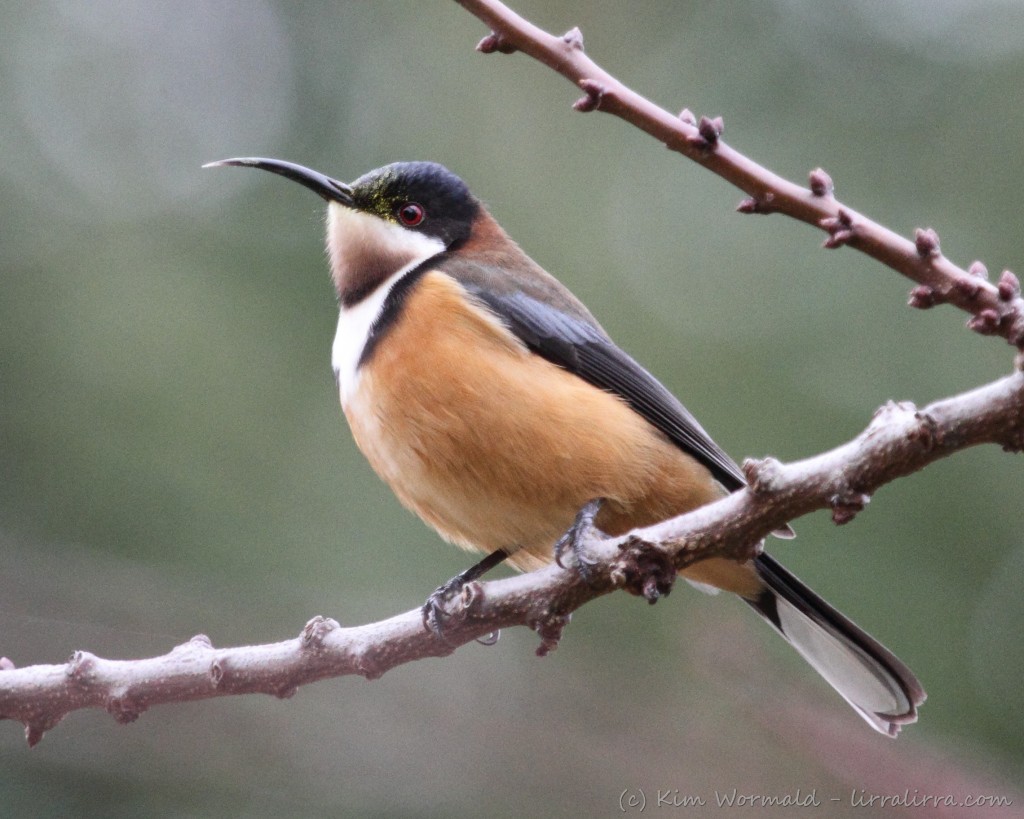
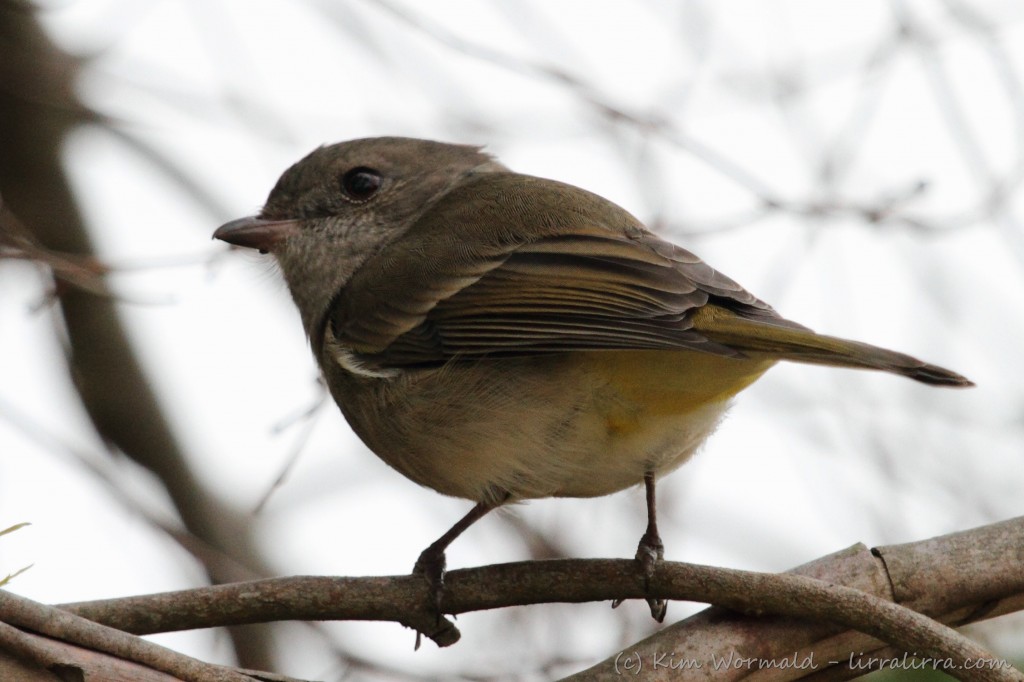
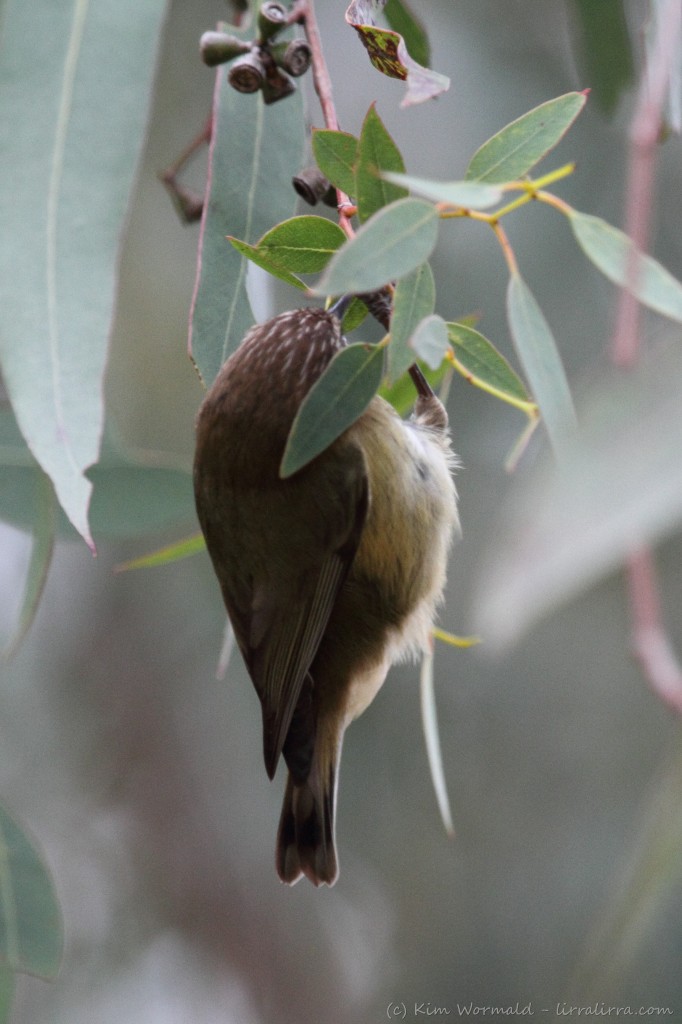
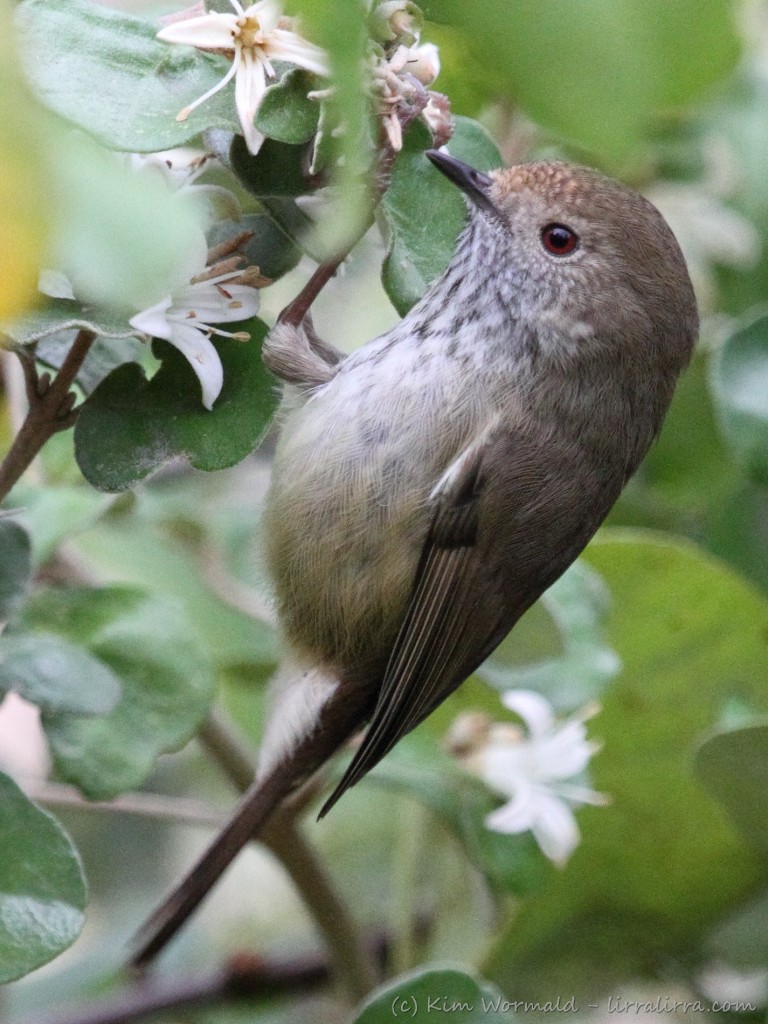
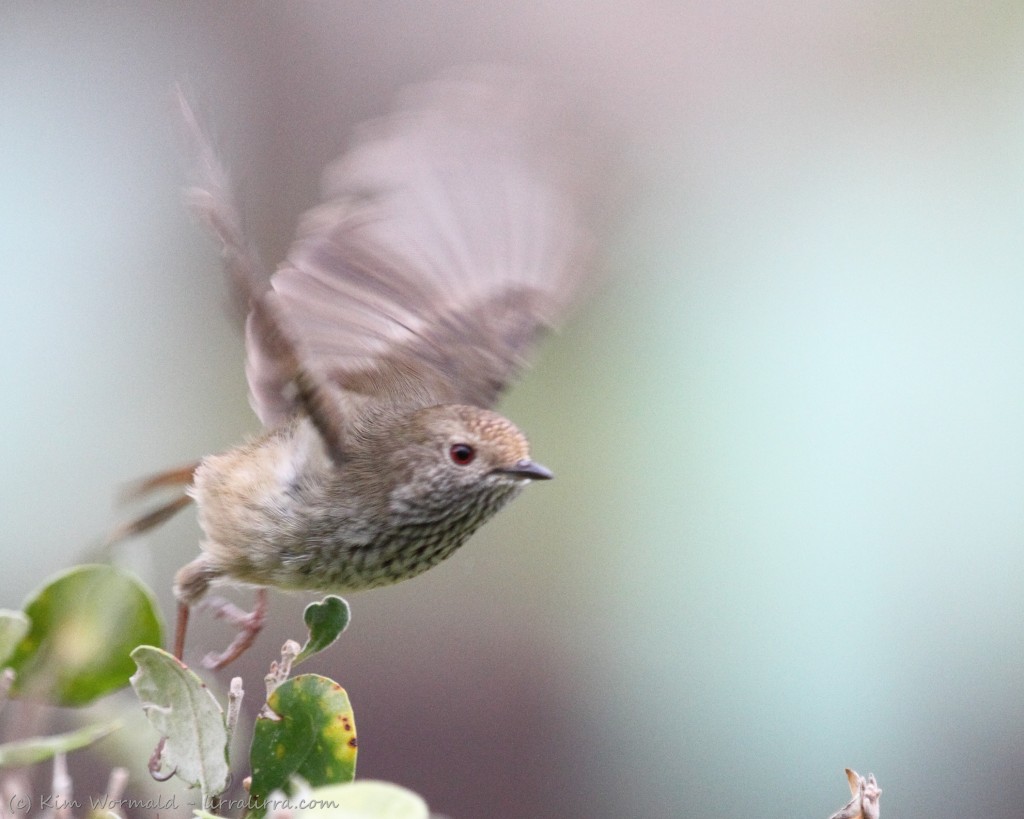

Carol Mcallister (my daughter) gave me your website. So enjoyed your photography. Bob and I have been birders from way back. You would have loved our Kenya garden.
Cheers Joyce
Hi Joyce, lovely to meet you! I’m so pleased you enjoyed my bird images. If you get time I’d love to know what birds and animals visited your Kenya garden. Carol takes beautiful photos, her misty trees are spectacular.
Hi Kim,
When I find out how to do it I’ll send you some photos of birds we took in our garden. Photos are on picasso but what email address do I send them?
Cheers Joyce
Could you send them to kim@lirralirra.com? Or maybe you could send me the link to your webpage? I’m looking forward to seeing them!
[…] Most honeyeaters take occasional insects and some eat fruit as well as nectar. In a previous post A Magical Morning there is an image of one of my favourite honeyeaters the Eastern […]
absolutely the bomb!!!!!!
Haha – thank you!
Kim,
I’m so glad to see you have gone live with your blog! I am very much looking forward to seeing your Austrailian bird images, reading your posts and watching your blog develop. I’ll also enjoy getting closer looks at some of the birds I saw and was delighted with on my trips to Australia.
Thank you for your encouragement Mia. Your affinity with nature and stunning images are an ongoing inspiration.
Beautiful photography, a wonderful blog!
Thank you! I’m glad you like the photos, hopefully they’ll improve as I learn more about my camera and photography in general.
wonderful site Kim, beautiful photos. looking forward to the next installment!
I’m so glad you like the site/photos – thank you for taking the time to let me know 🙂